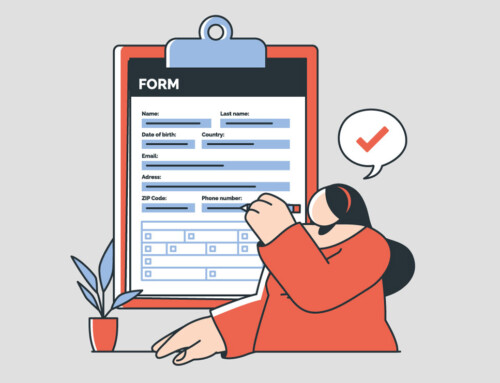Contents
Trust account management is one of the most critical ethical responsibilities for attorneys. At the center of this obligation is the IOLTA account—short for Interest on Lawyers’ Trust Accounts. These specialized trust accounts are required in most U.S. jurisdictions and demand close attention to regulatory detail. Understanding and maintaining IOLTA compliance is essential for legal professionals to protect clients and their practice licenses.
What Is an IOLTA Account? An IOLTA is an interest-bearing trust account that holds nominal or short-term client funds. In accordance with strict trust accounting rules, these funds are kept separate from a law firm’s business or personal accounts. The concept originated in Florida in 1981 and has since been adopted nationwide.
IOLTA accounts serve two primary purposes:
- Protecting client funds. They ensure that lawyers separate client money until it is earned or disbursed.
- IOTA supports public justice by directing interest from pooled client funds to state bar foundations. These foundations use the funds to finance legal aid programs.
Rather than letting small deposits sit idle in non-interest-bearing accounts, IOLTA programs allow banks to earn interest on these funds. State bar foundations then distribute this interest to support legal services for low-income individuals. In 2020 alone, these programs generated over $175 million in grants nationwide, according to the American Bar Association.
The underlying principle is clear: lawyers must ethically and legally separate client funds from their own. IOLTA accounts offer a structured, compliant way to meet that obligation while contributing to a greater social good.
Understanding Client Trust Accounts
Understanding client trust accounting is fundamental before delving into IOLTA compliance. These accounts are a cornerstone of a lawyer’s ethical and financial responsibilities, mandated by every U.S. state bar for managing client funds.
Proper trust accounting procedures are crucial if your firm handles retainers, settlements, or court fees. These regulations safeguard client interests, ensure transparency, and help legal professionals avoid significant errors.
Effective trust accounting practices also play a key role in IOLTA compliance. Lawyers typically deposit nominal funds or funds held briefly into IOLTA accounts.
A. What Is a Client Trust Account?
A client trust account is a dedicated bank account used solely to hold client or third-party funds. These funds might include:
- Retainers for future legal work
- Settlements awaiting disbursement
- Escrow deposits for real estate deals
- Court filing fees received in advance
Law firms must keep this account completely separate from their business accounts. You may not treat these funds as income until you’ve earned them. This strict separation forms the foundation of trust accounting and represents a core ethical requirement for legal practice.
B. Why Trust Accounts Are So Important in Legal Practice
Client trust accounts serve one primary purpose: to protect money that belongs to someone else. They must hold it in trust until the lawyer earns the fee or disburses the funds as instructed.
Here’s why these accounts matter:
- They prevent misuse of funds, whether accidental or intentional
- They ensure compliance with state bar rules
- They create clear records for client billing and audits
- They protect the lawyer’s reputation and maintain client trust
Proper use of a trust account is also essential for staying in IOLTA compliance, especially when the client funds qualify as nominal or short-term deposits.
C. The Golden Rule: Never Mix Funds
The most crucial rule in trust accounting is straightforward:
Never mix your law firm’s funds with a client’s funds.
Commingling refers to this violation; even a minor offense carries serious consequences. For example, using a client’s money to pay your bills or making a bookkeeping error can trigger disciplinary action.
To avoid these risks, every law firm should:
- Use properly titled accounts
- Keep separate ledgers for each client
- Reconcile balances regularly
- Use legal accounting software to monitor transactions
Maintaining IOLTA compliance starts with strict internal discipline and the tools to manage your trust accounts accurately.
What Makes an IOLTA Account Different?
After understanding client trust accounts, you must learn how IOLTA accounts expand their purpose. Both account types aim to protect client funds, but IOLTA accounts serve a larger mission. They benefit your clients and contribute to public access to justice.
Unlike regular trust accounts, you use IOLTA accounts for client funds that are too small or held too briefly to justify setting up individual interest-bearing accounts. Trust accounting rules strictly regulate these accounts, which are vital in ensuring IOLTA compliance across your legal practice.
Let’s break down how these accounts function, how they handle interest, and when you should use them.
A. How IOLTA Accounts Handle Interest
In a standard trust account, the interest generated typically belongs to the client. IOLTA accounts follow a different model. When you deposit client funds into an IOLTA, the interest is pooled and forwarded to a designated legal foundation.
This system applies to nominal or short-term deposits—funds that wouldn’t generate enough net interest to benefit the client after administrative costs. The account can still serve a purpose greater than financial returns by pooling them.
Using IOLTA accounts allows law firms to:
- Comply with provincial or state trust rules
- Avoid the complexity of opening separate interest-bearing accounts
- Support public justice programs while meeting ethical obligations
Neither you nor the client receives this interest. Instead, the money helps fund access to legal services and resources.
B. Where the Interest Goes and Why It Matters
IOLTA accounts serve clients and strengthen the legal system. In Canada, provincial law foundations collect the interest and invest it in programs that improve access to justice.
Here’s how different provinces use IOLTA-generated interest:
- The Law Foundation of Ontario funds Legal Aid Ontario and other services for vulnerable individuals
- The Law Foundation of British Columbia supports legal education, pro bono efforts, and community outreach
These programs make a real impact. Legal Aid Ontario reports that over one million people receive support annually through these initiatives.
When you manage trust funds correctly and follow IOLTA compliance rules, you do more than comply with regulations—you help ensure legal services reach those who need them most.
C. When Should You Use an IOLTA Account?
Use an IOLTA account when the client funds are:
- They are too small to produce a significant net interest
- Will be held for a short time
- Meet provincial or state bar guidelines that classify them as IOLTA-eligible
If the amount is large or will remain in trust for an extended period, open a separate interest-bearing account in the client’s name. This will ensure that the client receives any interest earned.
To maintain IOLTA compliance, you must evaluate each deposit and select the correct account type. This practice protects your clients and aligns your firm with regulatory requirements.
IOLTA Compliance: Key Rules and Regulations
Opening an IOLTA account is only the first step. Staying compliant with your province’s or state’s rules requires ongoing attention, detailed record-keeping, and the use of trusted financial institutions. Like everywhere, the Canadian Bar Association enforces its version of trust accounting regulations, and failure to follow them can quickly lead to disciplinary action.
IOLTA compliance is crucial; firms must monitor their practices to avoid violations. Even unintentional mistakes can trigger audits or disciplinary action. Here’s what demands your ongoing attention
A. Understand Your State or Provincial Bar Requirements
Each jurisdiction sets its trust accounting rules, which can vary significantly. What’s acceptable in Alberta may be non-compliant in Ontario. Similarly, California and New York follow different procedures and reconciliation standards.
Here’s what you need to know:
- Who Must Maintain an IOLTA Account: A lawyer receiving client funds must establish one in many jurisdictions.
- What Types of Funds Belong in an IOLTA Account: Most often, funds that are too small or held too briefly to benefit the individual client.
- What Reporting and Audit Practices Are Required: Some bars require quarterly reports; others may initiate surprise audits.
If you’re in real estate, immigration, or personal injury law, where client fund volume is high, establish written internal policies for handling incoming trust deposits. Delegate reconciliation reviews to a senior team member monthly.
Start by reviewing the trust accounting handbook provided by your local bar association or law society. Bookmark it, print it, and know it inside and out.
B. Use an Approved Financial Institution
You can’t just walk into any bank and open an IOLTA account. Law societies and state bars only permit IOLTA accounts at approved financial institutions. These banks meet regulatory standards that include:
- Automated interest remittance to legal foundations
- Overdraft notification agreements require immediate reporting of issues to the bar
- Regular interest rate reporting to ensure fair returns across the board
For small firms, ask your bank representative if they handle IOLTA accounts for other law firms. If they hesitate or seem unsure, find another institution. Choose a financial partner that understands the legal industry’s unique demands.
Keep copies of the bank’s IOLTA agreement and remittance policy in your compliance file in case of an audit.
C. Follow Proper Account Titling Requirements
Bar regulators want zero confusion between trust accounts and operating accounts. That’s why correct titling is essential. The account name must reflect that it is a trust account for client funds held under IOLTA regulations.
Typical formats include:
“Smith & Associates IOLTA Trust Account”
“Johnson Legal Group – Client Trust Account (IOLTA)”
Avoid using generic or unclear names like “Business Checking” or “Client Fund Account.” These raise red flags during audits and make internal tracking more difficult. Include your full legal or business name in the account title. Avoid abbreviations unless registered with your jurisdiction.
D. Maintain Complete and Accurate Records
Many lawyers, including seasoned practitioners, struggle with this critical requirement. Effective trust accounting demands precise tracking, thorough documentation, and regular reconciliation. Maintain these essential records at all times:
- Individual Client Ledgers
Each client whose money enters your IOLTA account must have a dedicated ledger. The ledger shows how much you received, when you spent it, and why. Include memos or file numbers to clarify transactions.
- Master Trust Ledger or Journal
This ledger reflects the total activity across all clients. The balance must match the trust account total at any given time. If it doesn’t, you’re out of compliance.
- Bank Statements & Reconciliations
Compare your internal records to the bank’s statements every month. In most jurisdictions, you’re also required to perform a three-way reconciliation that matches:
- Your bank balance
- Your total trust ledger balance
- The sum of all individual client ledgers
Legal accounting software like RunSensible can automate real-time reconciliation alerts and flag discrepancies.
Retain all trust-related records for at least 6 years, unless your bar sets a longer retention period.
Setting Up and Managing Your IOLTA Account
Establishing an IOLTA account involves creating a secure, compliant system to manage client funds while adhering to ethical and legal standards. Selecting an appropriate bank, meticulously recording transactions, and building disciplined processes are essential to ensure compliance and protect client funds daily. Whether launching a solo practice or scaling a mid-sized law firm, this section guides you through confidently setting up and operating your IOLTA account.
A. Choose an Approved Financial Institution
Start by selecting a bank on your jurisdiction’s list of approved financial institutions. These banks understand the reporting obligations tied to IOLTA accounts and offer the features required for compliance, such as:
- Automatic interest remittance to your provincial law foundation or state bar
- Overdraft alerts are sent directly to the regulator
- Regular interest rate updates and transparent service fees
Before opening the account, confirm in writing that the bank supports IOLTA-specific features. Keep a copy of their IOLTA setup agreement for audit preparation.
If you’re unsure where to start, contact your local bar association or law society for a list of participating banks. Don’t risk non-compliance by guessing.
B. Establish a Reliable Record-Keeping System
The core of trust accounting lies in your records. You must track every deposit, withdrawal, transfer, and transaction by client and reconcile your books regularly.
You have three main options for managing your records:
- Manual System: Using a physical ledger book (rarely recommended due to risk of error)
- Spreadsheet Templates: More flexible, but time-consuming and vulnerable to human mistakes
- Legal Accounting Software: The best option for automation, real-time balance tracking, and easy reconciliation
Use an integrated practice management system, which includes built-in trust accounting, three-way reconciliation, and client ledger tools. This software will eliminate the need to juggle multiple systems.
C. Create Written Procedures for Deposits and Withdrawals
You can’t afford to “wing it” with client funds. To maintain IOLTA compliance, your firm should create a straightforward, documented procedure for handling all trust-related transactions.
Your procedures should cover:
- Deposits: Who accepts funds? How are they labeled and logged? Are receipts issued?
- Withdrawals: What approvals are required? How is client authorization recorded?
- Disbursements: What forms or invoices are required before funds leave the account?
Set permissions within your accounting software so only designated staff can move funds; this protects the firm and prevents internal misuse.
D. Stay Ahead of Compliance with Regular Reviews
Don’t wait for an audit to evaluate your process. Schedule internal reviews monthly or quarterly. Review ledgers, bank statements, and reconciliation reports.
Ask yourself:
- Are we accurately logging every transaction?
- Are individual client balances always in sync with the master ledger and bank balance?
- Are we documenting approvals and client instructions for every disbursement?
Maintaining this level of oversight builds a strong defense against compliance violations and demonstrates good faith if your firm is ever audited.
The Three-Way Reconciliation: The Cornerstone of Compliance
The three-way reconciliation is the most essential practice in managing an IOLTA account. This is the regulatory expectation in most jurisdictions. It confirms that your internal records match your bank’s and that all client funds are accounted for down to the last cent.
Whether you’re a solo attorney or managing multiple trust accounts across a firm, regular three-way reconciliations protect your clients, reputation, and license.
A. What Is a Three-Way Reconciliation?
A three-way reconciliation is the process of verifying that three separate trust accounting records agree:
- Bank Statement Balance – The ending balance shown on your monthly bank statement
- Trust Ledger Balance – The total balance shown in your firm’s trust ledger (which records all trust account transactions)
- Combined Client Ledger Balances – The total of all individual client trust balances maintained in your system
All three must match exactly. Any discrepancy signals a potential error, misallocation, or even a more serious compliance issue.
B. Why It’s Crucial for IOLTA Compliance
Three-way reconciliation is more than an accounting routine—it’s your primary tool for ensuring trust accounting accuracy and demonstrating IOLTA compliance.
This process:
- Detects errors such as data entry mistakes or forgotten deposits
- Prevents misappropriation by identifying fund mismanagement early
- Proves compliance in the event of an audit or regulatory inquiry
Without regular reconciliation, even small mistakes can compound over time. When a client or regulator notices a discrepancy, it could be too late to fix it without significant consequences.
C. How Often Should You Reconcile?
Most state bars and Canadian law societies require three-way reconciliation at least once per month. Some jurisdictions may allow quarterly reviews, but monthly is the safest and most widely recommended schedule.
Frequent reconciliation helps you avoid discrepancies and ensures that issues are caught while they’re still easy to resolve.
Set a recurring task on your calendar or assign a designated staff member responsibility. The more consistent the habit, the easier it becomes to maintain clean and audit-ready records.
D. Step-by-Step: How to Perform a Three-Way Reconciliation
Here’s a practical breakdown of the reconciliation process:
- Gather All Records for the Same Period
- Download your bank statement for the IOLTA account covering the relevant month
- Pull your firm’s trust ledger showing total trust transactions for the same period
- Compile all individual client ledgers from that same date range
Ensure all records reflect the same date range, such as the month’s first through the last day.
- Reconcile the Trust Ledger to the Bank Statement
- Compare your firm’s trust ledger balance to the ending balance on the bank statement
- Identify any outstanding checks or deposits in transit
- Adjust the bank statement to account for these items and verify that both balances align
- Reconcile the Client Ledgers to the Trust Ledger
- Add up the balances of all individual client ledgers
- The total must match the trust ledger balance
- If it doesn’t, recheck for errors, omissions, or misapplied transactions
- Reconcile the Client Ledgers to the Bank Statement
- The combined client balances should also match the adjusted bank balance
- All three values—bank, trust ledger, and client ledgers—must agree exactly
- Document the Reconciliation
- Create a written or digital reconciliation report
- Include notes on any discrepancies and how they were resolved
- Store the report securely in your compliance files in case of an audit
Legal accounting software like RunSensible can automate this process, reduce manual errors, and generate audit-ready reconciliation reports with a few clicks.
Common IOLTA Mistakes and How to Avoid Them
Managing an IOLTA account demands strict adherence to trust accounting rules set by bar associations and law societies. Minor errors can trigger audits, penalties, license suspension, or even disbarment. To safeguard your firm and maintain compliance, identify common mistakes and implement preventive practices.
A. Commingling Funds
Commingling happens when you mix client funds with business or personal accounts, such as depositing a retainer into a business checking account or using trust funds for office expenses. Even brief or accidental mixing violates regulations.
To avoid this, deposit client funds directly into an appropriately titled IOLTA account. Never use this account to pay firm expenses; transfer funds only when earned and thoroughly documented. Create and enforce written procedures for handling deposits and disbursements to ensure team consistency.
B. Misappropriating Client Funds
Misappropriation occurs when you use one client’s funds for another matter or to cover business costs, often due to sloppy record-keeping or misreading account balances. Regulators penalize the outcome, intentional or not, with severe disciplinary measures.
Prevent this by verifying each client’s balance before approving disbursements. Keep detailed ledgers for every client and use accounting software that flags payments exceeding available funds.
C. Keeping Inadequate Records
Poor documentation harms your firm as much as mismanagement. Missing or incomplete records can block you from proving proper fund handling, causing audit failures even without actual misconduct. Common problems include absent ledgers, unverified transactions, and missing receipts or supporting documents.
To stay compliant, maintain clear, organized records for all client transactions. Use legal-specific accounting software to track deposits, withdrawals, and memos in real time. Assign a team member to review records regularly for accuracy and completeness.
D. Skipping Regular Reconciliations
Failing to reconcile trust accounts regularly allows minor errors to snowball into major issues. Many compliance violations arise from problems that routine checks could have caught.
Schedule monthly three-way reconciliations to ensure the bank balance, trust ledger, and sum of client ledgers align. Use accounting tools to streamline this process and store reconciliation reports for future audits.
E. Ignoring Bank Errors
Banks occasionally err, posting incorrect amounts, charging duplicate fees, or mishandling deposits. These mistakes can go unnoticed if you don’t monitor account activity closely.
Review every bank statement line against your internal ledger. Investigate discrepancies immediately, notify your bank, and document communications for potential audits. Although the bank holds the funds, you bear responsibility for ensuring account accuracy.
- Conclusion
- Recap: IOLTA compliance is non-negotiable for ethical legal practice.
- Emphasize: Strict adherence to record-keeping and reconciliation.
- Call to Action: Urge readers to review their state bar’s specific IOLTA rules and utilize appropriate accounting tools.
Final Thoughts
Navigating IOLTA compliance is a non-negotiable part of ethical legal practice and proper trust accounting. Interest on Lawyers’ Trust Accounts is specifically designed to hold nominal or short-term client funds separate from a firm’s operating finances. These accounts serve two key purposes: to protect client assets and to fund public legal aid programs by pooling earned interest.
Maintaining compliance isn’t about checking a box—it requires ongoing diligence. Lawyers must understand the rules set by their jurisdiction, use approved financial institutions, follow clear titling conventions, and maintain accurate records. Above all, the core rule remains: never mix client funds with firm or personal money.
A critical part of compliance is regular three-way reconciliation, ensuring your trust account bank balance, firm ledger, and client ledgers all match. Skipping this step can allow small mistakes to snowball into serious issues.
Common pitfalls include:
- Commingling client and firm funds
- Using one client’s funds for another matter
- Inadequate or incomplete record-keeping
- Skipping monthly reconciliations
- Failing to catch bank errors
By staying proactive, you protect your clients, license, and reputation. The interest earned on IOLTA accounts doesn’t benefit you or the client directly, but it contributes to a more accessible justice system. That alone is worth doing it right.
We encourage all legal professionals to review their jurisdiction’s IOLTA rules and adopt tools like RunSensible to streamline their trust accounting. Modern legal software reduces risk, improves efficiency, and ensures your practice meets the highest ethical and regulatory standards.
Make sure your law firm’s trust accounting is precise and compliant with RunSensible’s specialized legal accounting software. Designed for legal professionals, it offers features like automated transaction tracking, detailed reporting, and seamless reconciliation processes.
Experience how RunSensible can enhance your firm’s trust accounting practices. Schedule a personalized demo today and explore features tailored to your firm’s needs.
FAQs
1. Beyond the monthly schedule, what specific triggers should prompt an immediate or unscheduled three-way reconciliation of an IOLTA account?
While monthly three-way reconciliation is the standard, certain events should trigger an immediate review to ensure ongoing IOLTA compliance and detect issues early. These include: discovery of a potential bookkeeping error, notification from the bank of a discrepancy or overdraft, before and after a change in accounting staff or software, or if there’s any suspicion of unauthorized access or transaction. Proactive reconciliation in these instances can prevent minor issues from escalating into significant compliance violations.
2. When selecting an “approved financial institution,” what specific IOLTA-related services and assurances should a law firm document beyond basic compliance features like automated interest remittance?
Beyond the essential automated interest remittance to legal foundations and overdraft notification agreements, firms should seek documented assurances from the bank regarding their understanding of and adherence to all current state bar IOLTA rules. This includes confirming the bank’s procedures for handling potential issues, their policy on IOLTA account fees (and ensuring they are not charged to the IOLTA principal or interest), their process for regular interest rate reporting to ensure fair returns, and their protocols for responding to bar inquiries or audits. A copy of the bank’s IOLTA setup agreement and specific policy documents is crucial for audit preparation.
3. For firms handling high volumes of client funds, such as in real estate or personal injury law, what advanced written procedures for IOLTA deposits and withdrawals are recommended beyond basic logging?
Written procedures should go beyond simple logging and incorporate robust internal controls for high-volume practices. This includes mandating dual authorization for withdrawals above a certain threshold, establishing a clear protocol for verifying the source and purpose of all incoming funds before deposit, detailing the process for client authorization for every disbursement (with documented proof), and outlining specific steps for handling electronic fund transfers to and from the IOLTA. Procedures should also assign specific responsibilities for each step and ensure segregation of duties where possible to prevent internal misuse and accuracy. Regular internal audits of these procedures are also advisable.
4. The article mentions that if funds are significant or held for an extended period, a separate interest-bearing account should be opened in the client’s name. What specific criteria or thresholds (e.g., monetary amount, duration) typically guide this determination, and what are the documentation requirements when such a decision is made?
While the article states that IOLTA accounts are for nominal or short-term funds, and larger or longer-held funds necessitate a separate client-specific interest-bearing account, individual state bar rules or guidelines typically define the exact thresholds. These rules ensure that when the interest earned is more than the administrative costs and would provide a net benefit to the client, the client receives that interest. Firms must meticulously evaluate each deposit. When deciding to open a separate account, lawyers should document the rationale, including the amount, the expected duration the funds will be held, and the anticipated interest that could be generated, referencing the specific bar rule that guides this decision. This documentation should be kept in the client’s file.
5. What are the nuanced differences in consequences between an accidental, isolated commingling event that is immediately rectified, versus systemic commingling discovered during an audit?
While commingling is a serious violation, the disciplinary response often varies based on intent, frequency, magnitude, and correction speed. An accidental, isolated commingling event (e.g., a minor bookkeeping error resulting in a small amount of firm money in the IOLTA, or vice-versa) that is immediately identified, documented, and rectified is likely to be viewed less severely than systemic commingling. Systemic commingling, especially if it appears intentional or is due to gross negligence in record-keeping and is only discovered during an audit, can lead to severe penalties, including substantial fines, mandatory ethics courses, public reprimand, suspension, or even disbarment. Regulators will scrutinize whether the firm had proper procedures to prevent such errors and the diligence shown in addressing them.
6. How can legal accounting software prevent common IOLTA mistakes beyond just record-keeping, particularly concerning misappropriation and reconciliation discrepancies?
Modern legal accounting software offers functionalities beyond basic record-keeping that actively help prevent IOLTA mistakes. For instance, many systems can flag or prevent disbursements if a specific client’s ledger balance is insufficient, thereby helping to avoid inadvertent misappropriation of one client’s funds for another. For reconciliation, software can automate matching bank transactions with internal ledgers, immediately highlighting discrepancies that could indicate errors or unrecorded transactions. Some tools provide real-time three-way reconciliation alerts, generate audit-ready reconciliation reports, and create clear audit trails for every transaction, including who made changes and when. They can also enforce permission levels, limiting who can authorize or execute fund movements and adding a layer of internal control.
References
- American Bar Association IOLTA Overview
https://www.americanbar.org/groups/interest_lawyers_trust_accounts/overview/ - LawPay IOLTA Account Definition and Compliance Rules
https://www.lawpay.com/about/blog/iolta-account/ - California Bar Client Trust Accounts and IOLTA
https://www.calbar.ca.gov/Attorneys/Conduct-Discipline/Client-Trust-Accounting-IOLTA - American Bar Association Model Rule 1.15 Safekeeping Property
https://www.americanbar.org/groups/professional_responsibility/publications/model_rules_of_professional_conduct/rule_1_15_safekeeping_property/ - American Bar Association IOLTA Programs Directory https://www.americanbar.org/groups/interest_lawyers_trust_accounts/resources/directory_of_iolta_programs/
- Clio IOLTA Account Comprehensive Guide
https://www.clio.com/blog/iolta-account/ - Bench Accounting IOLTA Account Management Guide
https://www.bench.co/blog/accounting/iolta
Disclaimer: The content provided on this blog is for informational purposes only and does not constitute legal, financial, or professional advice.








